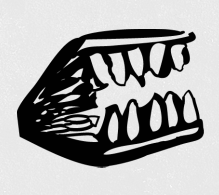
WE ACCEPT ARTICLES ABOUT THE ARTS, ART WRITING, ART BOOKS, EXHIBITIONS, ARTISTS
- Academic submissions up to 6000 words
- Artistic Practice submissions up to 5000
- Interviews up to 4000 words
- Exhibition Reviews between 1000 and 3000 words
- Opinion articles between 1000 and 3000 words
- Articles’ word count includes notes and references. They do not include contributor’s details, keywords and abstract.
- Images must be high res (300 dpi min), cited appropriately and be sent separately as jpegs
- Make sure to include your bio, university affiliation, most recent programme and orcid number
- Academic and Artistic Practice
- Abstract of up to 100 words
- 6 keywords
- Introduction and Conclusion mandatory (but please don't title them as such)
- Wikipedia is not a valid reference
- Harvard Referencing system + Intellect Style Guide
- Author needs to seek/have license to use images (if you can't get the license do let us know in case we are able to help)
- Use footnotes not endnotes
- Exhibition/Book Reviews
- Details of the Exhibition
- 6 keywords
- Harvard Referencing system + Intellect Style Guide
- Author needs seek/to have license to use images
- Use footnotes not endnotes
- Opinion + Interviews
- Not peer-reviewed, edited by JAWS
- 6 keywords
- Harvard Referencing system + Intellect Style Guide
- Author needs to seek/have license to use images
- Visual Essays / Unconventional Submissions
- Abstract of up to 100 words
- 6 keywords
- Harvard Referencing system + Intellect Style Guide
- Author needs to seek/have license to use images
- This is not creative writing - it still needs to have a critical backbone
Work must be original, copyright of the author and must not have been published elsewhere (including in full on personal blogs). We do accept work previously submitted for academic assessment.
Peer review process
JAWS maintains an international network of student peer reviewers, which is constantly in flux. We match our submissions with appropriate reviewers - a PhD submission will be matched with PhD peers from an adequate background of expertise.
Please see below the guidelines we give peers,
so that when you submit you know what are our criteria for reviewing.
A recommendation will be made to publish with minor adjustments, publish with major adjustments, or do not publish.
- Does the submission have 6 – 8 keywords and an abstract?
- Is Harvard referencing followed?
- Are there any typos or grammatical errors?
- Is the submission clear in terms of what the subject being discussed is?
- Are there any issues with the submission? How do you propose that the author could resolve these issues?
- In your expert opinion, are there any fallacies in the submission (incorrect subject knowledge, logical errors, poor interpretations)? Are the arguments convincing?
- Does the submission have a good structure and flow (is a ‘narrative’ clear)? Is the submission good in terms of readability?
- Is the submission an appropriate length?
- Is the introduction and conclusion effective?
- Are the sources or data used in the submission of appropriate quality? Are the sources used critically?
- Are the voices (and writing style) used in the submission appropriate?
- Is the analysis used in the submission of decent quality?
- Is the purpose of the submission clear? Is there a question that is answered?
- Are there certain parts of the submission that require changes?
- Are uncommon terms properly defined? Are different iterations of a term clearly referenced and defined in relation to the purpose of the essay? (i.e. if terms have different definitions for different authors, is this properly acknowledged?)
- Do you think the article requires images?





